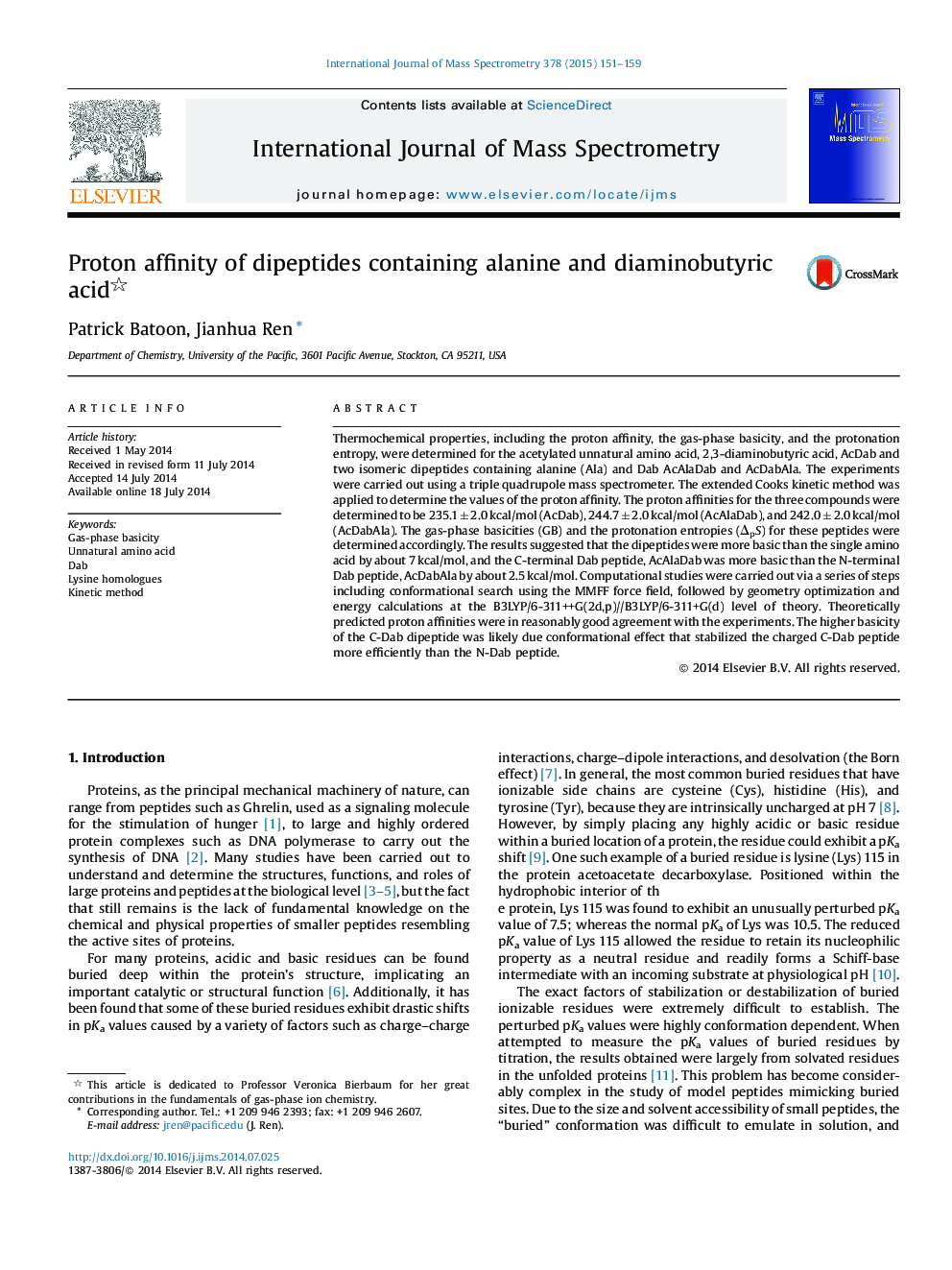| Article ID | Journal | Published Year | Pages | File Type |
|---|---|---|---|---|
| 1192091 | International Journal of Mass Spectrometry | 2015 | 9 Pages |
•Determined proton affinities of acetylated dipeptides containing a basic unnatural amino acid (Dab).•The proton affinity was sequence dependent.•The N-Dab peptide had higher proton affinity than the C-Dab peptide.•The difference in the proton affinity was likely due to conformational effects.
Thermochemical properties, including the proton affinity, the gas-phase basicity, and the protonation entropy, were determined for the acetylated unnatural amino acid, 2,4-diaminobutyric acid, AcDab and two isomeric dipeptides containing alanine (Ala) and Dab, AcAlaDab and AcDabAla. The experiments were carried out using a triple quadrupole mass spectrometer. The extended Cooks kinetic method was applied to determine the values of the proton affinity. The proton affinities for the three compounds were determined to be 235.1 ± 2.0 kcal/mol (AcDab), 244.7 ± 2.0 kcal/mol (AcAlaDab), and 242.0 ± 2.0 kcal/mol (AcDabAla). The gas-phase basicities (GB) and the protonation entropies (ΔpS) for these peptides were determined accordingly. The results suggested that the dipeptides were more basic than the single amino acid by about 7 kcal/mol, and the C-terminal Dab peptide, AcAlaDab, was more basic than the N-terminal Dab peptide, AcDabAla, by about 2.5 kcal/mol. Computational studies were carried out via a series of steps including conformational search using the MMFF force field, followed by geometry optimization and energy calculations at the B3LYP/6-311++G(2d,p)//B3LYP/6-311+G(d) level of theory. Theoretically predicted proton affinities were in reasonably good agreement with the experiments. The higher basicity of the C-Dab dipeptide was likely due conformational effect that stabilized the charged C-Dab peptide more efficiently than the N-Dab peptide.
Graphical abstractFigure optionsDownload full-size imageDownload high-quality image (140 K)Download as PowerPoint slide
